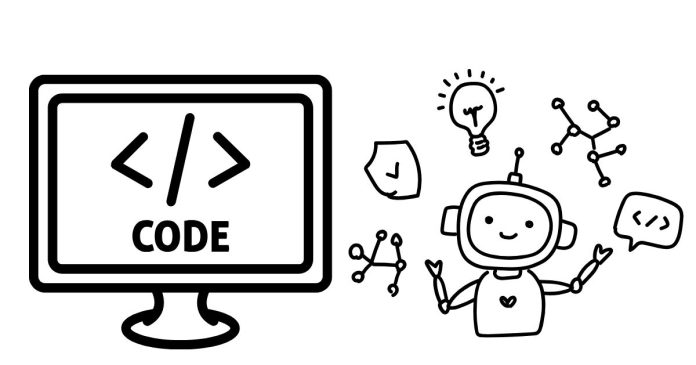Symbols often carry meanings that vary based on their context, origin, or interpretation. One symbol that has intrigued people in different contexts is <……>. On the surface, it may appear as just a series of less-than and greater-than symbols enclosing dots, but its meaning can change depending on where and how it’s used.
In this blog post, we’ll explore the possible interpretations of <……> across different platforms, contexts, and cultures.
1. The Basic Structure of <……>
Before diving into its meanings, let’s break down the symbol’s structure:
<and>are widely recognized as mathematical symbols meaning “less than” and “greater than.”- The dots
……in the middle could signify ellipses or continuation, suggesting something ongoing or left unsaid.
The combination of these elements makes <……> a versatile symbol, open to interpretation depending on its usage.
2. Uses of <……> in Communication
A. In Text-Based Conversations
In casual text messages or online chats, <……> could signify:
- Pause or Hesitation: It might represent someone taking a moment to think, much like the ellipses (
...) often do.- Example:
- Person A: “How do you feel about the meeting?”
- Person B: “<……> I’m not sure yet.”
- Example:
- Ambiguity: It may imply an open-ended thought or an unwillingness to provide a clear answer.
B. Emoticon-Like Usage
In some cases, <……> can resemble a minimalist or abstract emoticon, potentially expressing:
- Confusion or Uncertainty: The brackets might frame the “dots” as eyes or a neutral expression.
- Awkward Silence: Used humorously or seriously to indicate a moment of speechlessness.
3. <……> in Digital and Coding Contexts
A. Placeholder in Coding
In programming or markup languages, symbols like <…> are often used as placeholders. Developers might use <……> to signify:
- Unfinished Code or Tags: A temporary marker indicating where content or code is to be added later.
- Example:
<……>could represent an incomplete HTML or XML tag.
- Example:
- Custom Symbols: It might serve as a user-defined placeholder in certain codebases.
B. In Digital Design
Web or UI designers sometimes use similar symbols to signify sections under construction or as filler content during prototyping stages.
4. Cultural Interpretations of <……>
A. Artistic or Literary Use
Writers or artists may use <……> to convey abstraction or minimalism.
- Metaphorical Silence: It can represent silence or the unspoken, letting readers interpret what’s left unsaid.
- Artistic Ambiguity: In poetry or visual art, the symbol can act as a creative element, inviting audiences to project their own meanings.
B. Internet Memes and Trends
In meme culture or social media, <……> could be used humorously or sarcastically:
- To exaggerate indecision, like a character pausing awkwardly.
- As a filler to express “I have no words” moments.
5. <……> in Professional or Academic Contexts
A. Linguistic Tools
Linguists might use <……> as part of annotation to denote omitted text or unspecified content. For example:
- In transcriptions, it could indicate missing or inaudible speech.
- In academic writing, it might signal gaps in data or unverified information.
B. Scientific or Mathematical Representation
While <……> is not a standard symbol in mathematics or science, it could be improvised in contexts like:
- Representing Continuity: The dots could symbolize a sequence or a range that’s unspecified.
- Illustrating Boundaries: The brackets might indicate limitations or a framework.
6. Common Misinterpretations of <……>
While <……> is open to interpretation, it’s easy to misread its intent in different settings:
- Confusion with Other Symbols: Some might mistake it for programming syntax like
<...>or<tag>. - Misunderstood Tone: In casual conversations, its use might unintentionally come across as dismissive or ambiguous.
To avoid misunderstandings, it’s helpful to consider the context and clarify the intended meaning if needed.
7. Why Symbols Like <……> Matter
Symbols like <……> reflect the evolution of language and communication in the digital age. They show how:
- Minimalism Communicates Depth: Simple symbols can express complex emotions or ideas.
- Context Shapes Meaning: The same symbol can convey different messages in coding, conversation, or art.
- Universal Appeal: Symbols transcend language barriers, making them accessible to a global audience.
8. How to Use <……> Creatively
Whether you’re a writer, designer, or everyday communicator, <……> can be a versatile tool:
- In Text Messages: Use it to create a playful or dramatic pause.
- In Art: Incorporate it into minimalist designs or as part of abstract work.
- In Coding: Adopt it as a placeholder for incomplete sections.
Conclusion
The beauty of <……> lies in its ambiguity and adaptability. While its meaning changes depending on the context, it consistently invites interpretation and creativity. Whether you see it as a symbol of hesitation, an artistic flourish, or a digital placeholder, <……> proves that even the simplest elements can have a profound impact.
What does <……> mean to you? Share your thoughts and interpretations in the comments below!



